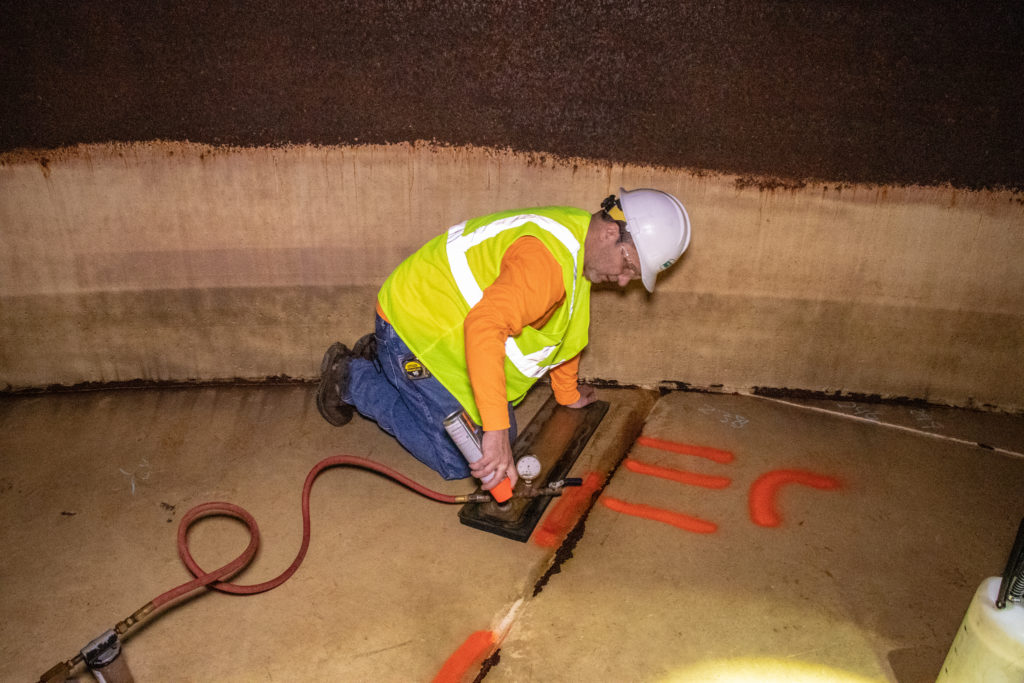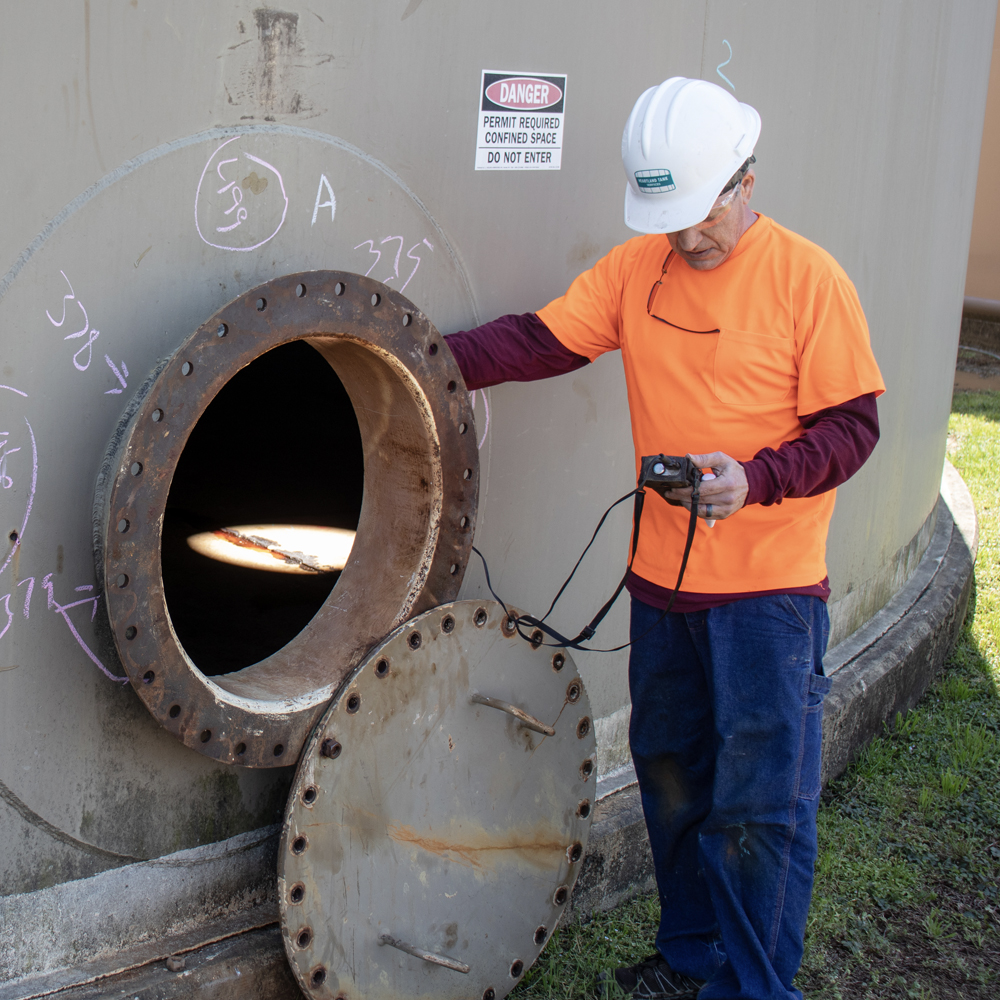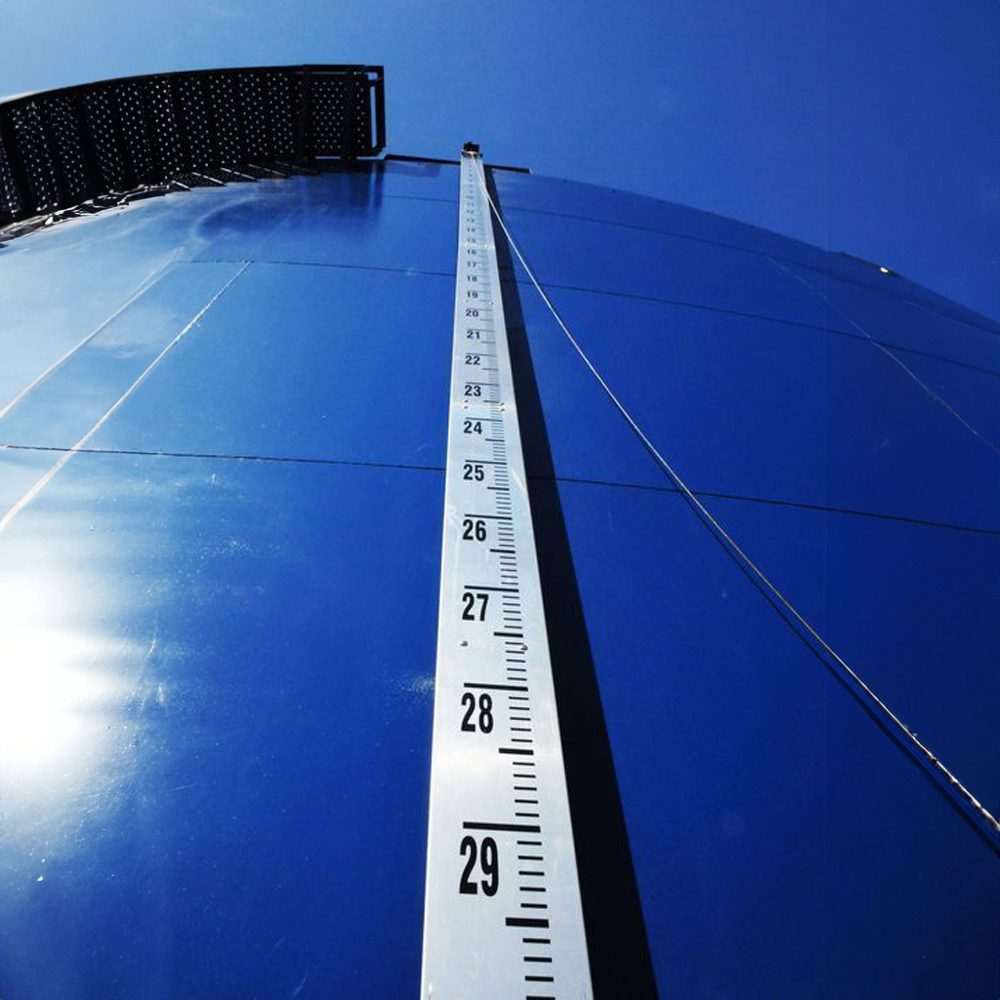Regular API-653 inspections are crucial for tank longevity and state regulatory requirements.
Aboveground storage tanks will slowly lose structural integrity due to the corrosive nature of liquid fertilizer. Regularly scheduled inspections by licensed inspectors will help mitigate any damage and help you remedy minor issues before they become less manageable.
What is an API 653 Tank Inspection?
The inspector will analyze the tank for to determine if it is fit for continued service based on criteria analyzing the safety of the structure components. Based on the observations and comparison to API 650 tank requirements, the certified tank inspector will detail any needed repairs, suggested repairs, and the maximum tank or liner fill height.
The components examined during the inspection are the foundation, tank bottom, shell courses, roof, attached appurtenances (nozzles, manways, fill pipes, etc.), ancillary equipment (stairways, railings, etc.), and internal PVC liner if applicable. The examinations involve visual inspection as well as ultrasonic thickness measurements of the shell, roof, and floor.
Who Needs Above Ground Tank Inspections?
Every API 650 tank needs regular inspections. A formal API inspection is needed on a regular basis, but informal tank inspections completed by the tank owner is important as well. Here is a schedule of inspections to perform on an API 650 above ground storage tank recommended by The Fertilizer Institute:
• Monthly External In-Service “Walk Around” Inspections
• Formal External and Internal Out-of-Service API 653 Inspections Every 5-10 Years
Monthly Inspections
Monthly inspections should be conducted by the owner of the tank and the results should be recorded in a log. Essentially, you need to visually inspect the outside of the tank for any corrosion, settling of the tank, leaks, or any other type of condition that has changed since the last monthly inspection. Tanks change very slowly over time, so it is important to record any observations to see any pattern and allow you to repair any issue in its infancy instead of permitting it to become a large problem.

Heartland Tank Services’ API certified inspectors help ensure that your tank is safe, reliable, and fit for continued service.
Formal API 653 Inspections
Tanks change in ways that cannot be visually detected and that is why formal API inspections are required. Heartland Tank Services’ certified inspectors will used their trained eyes to visually inspect the inside and outside of the tank and use techniques, such as ultrasonic thickness measurements to test the welds and tank plate thicknesses to ensure they are secure.
For liquid fertilizer tanks, no federal requirements exist as to how often an API 650 tank must be inspected. Most states and regulatory agencies require periodic inspections. In line with the recommendations of The Fertilizer Institute, states with inspection requirements have time periods of between 5 and 10 years for inspections. State inspection requirements are usually tied to obtaining or renewing an operation license or permit.
Are you unsure of your state’s tank inspection requirements? Heartland Tank Services tracks all state requirements, so just contact us to find out when you need your tank inspected. To learn more, click here.
Let our certified inspectors help you complete this task in a timely and professional manner. In conducting these specific inspections, Heartland Tank Services’ API certified inspectors have the priority of ensuring that your tank is safe, reliable, and fit for continued service.



